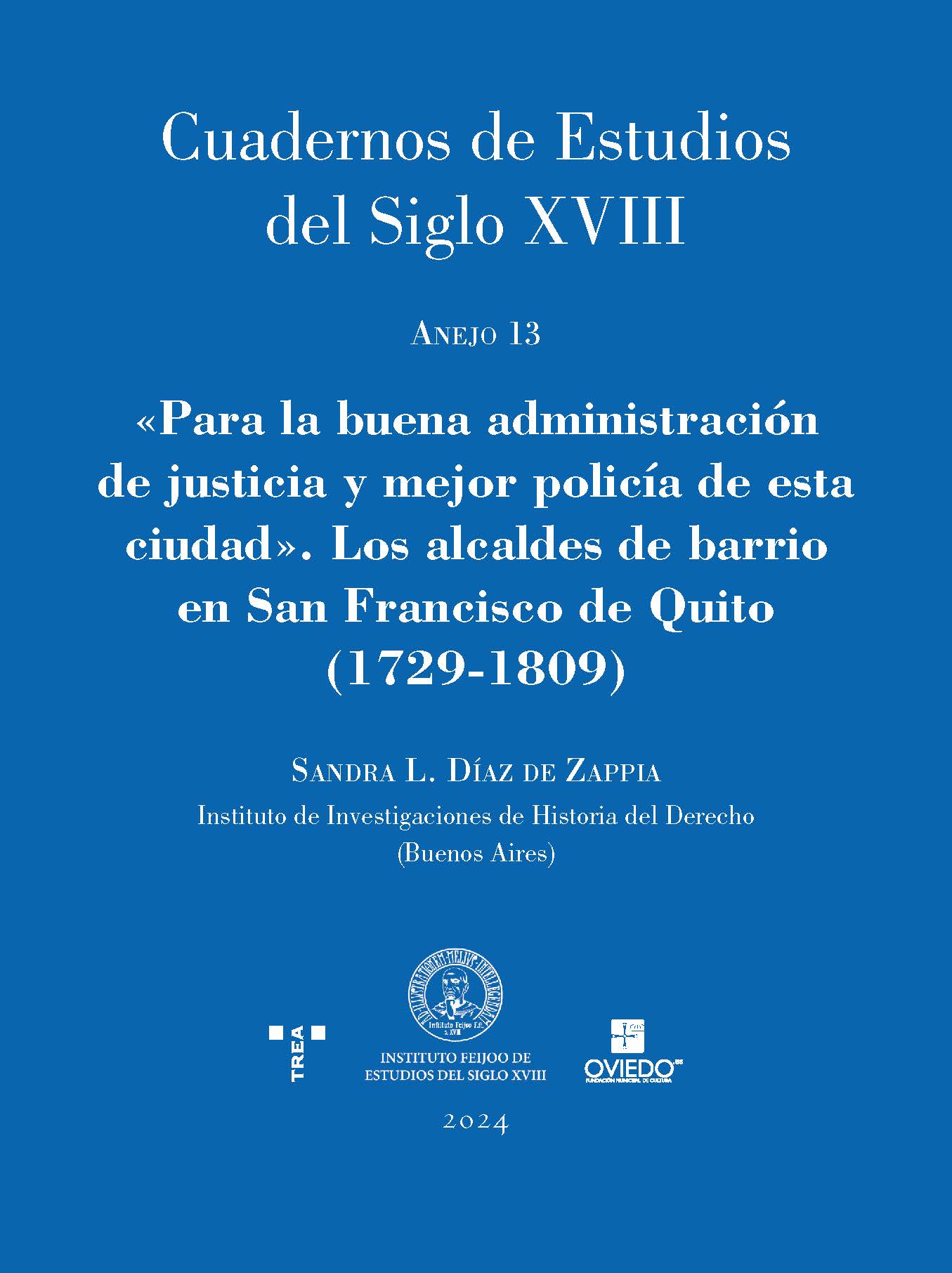Abstract
The creation of the alcaldías de barrio in Hispanic America had the Real Cédula of 1768 as its direct peninsular predecessor, through which they were established, first in Madrid and, later, through a 1769 mandate, in other Spanish cities as well. This paper will examine the presence of this institution in the city of San Francisco de Quito up to the end of the Hispanic period. With this aim, the characteristics of the alcaldías will be analysed from an institutional perspective; the scope of action, the requirements and suitability, the designation and duration in office, the titles and attributes, the use of uniforms and weapons, the subordinates and assistants, performance and functions, the cessation of the function, as well as effectiveness of the institution, will all be addressed.

This work is licensed under a Creative Commons Attribution-NonCommercial-NoDerivatives 4.0 International License.
Copyright (c) 2024 Sandra L. Díaz de Zappia


